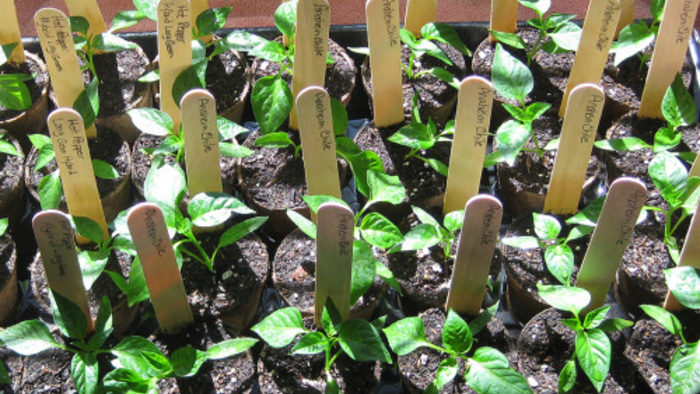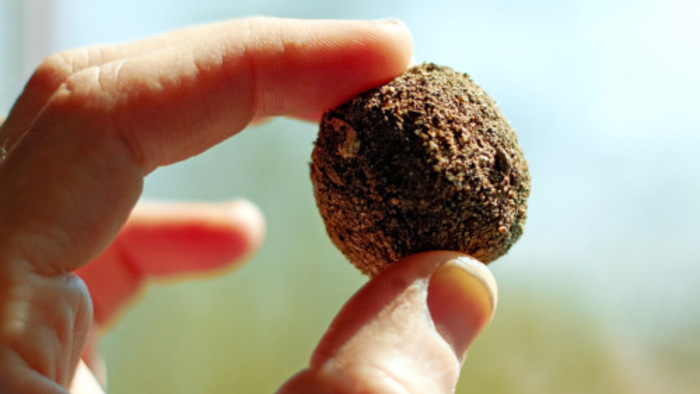
If you are as addicted to vegetable gardening as I am, you’ve already gotten a large handful of 2014 seed catalogs (mine started to trickle in with the Christmas cards from family and friends). To view the master list of seed catalog reviews, click here. Part of these are from your usual staple of trusted seed suppliers, and part may be new ones you’re wanting to try. As I mentioned in my last post, getting your seed catalogs is one of the first things you can do to kick off next year’s garden season. I always look forward to getting mine, and it’s a great way to spend an afternoon when the weather’s too gloomy to do work outside. As I explore my ‘new crop’ of catalogs, here’s how I have benefitted the most.
Check out the new kids on the block. Every seed supplier will showcase their new varieties and products in their catalogs (sometimes in the first few pages). Some may even be exclusive to that supplier, while others may be older varieties that have been improved or replaced (bush green beans 2.0, if you will).
Focus on one veggie at a time. Similar to when you’re standing in front of the seed display at your local garden center, it’s very easy to get overwhelmed at all of the possibilities of what you can grow. Every packet seems to be staring at you, with it’s beautiful photography or illustration, saying “me… me… me…, yes, grow me!!” I solve this by looking at the master list of veggies I want to grow, taking each veggie one at a time, opening each of the catalogs I have to the section of that veggie, and then making my selections.
Mark, highlight and note. Speaking of selecting, I treat my seed catalogs like my old college textbooks. I mark my choices with a highlighter and write notes in the margins. I either dog-ear the pages or use sticky notes. You get the idea.
Compare prices. Each supplier has their own pricing, and some are more expensive than others. You will obviously save more on shipping costs if you order most of what you need from one or two sources. This can be difficult if you are growing unusual or hard-to-find varieties. And, as mentioned before, if you’ve got an opportunity to split the costs of seeds with other gardeners (i.e. through community gardens, garden groups, friend seed swaps), take advantage of it. Finally, there’s the decision of buying locally or ordering:
The advantages of ordering from seed catalogs/online are:
1. Way, way better selection
2. You can order anytime, so you have them early
3. Easier to compare prices, as opposed to driving all over town to check different garden centers
4. More convenient
The advantages of getting your seeds locally are:
1. You get the seeds immediately
2. You can support your local independent garden centers
3. The selections may be for your area and you can ask the garden center’s staff for recommendations (assuming they are a very reputable garden center)
I’ve found that the costs of shipping (seed catalogs) as opposed to sales tax (locally) are close enough that I don’t even worry about it.
Get your other stuff too. Seed catalogs offer more than just seeds. Many now offer seed starting supplies, fertilizers and tools, as well as products for pest and disease control, growing, watering, harvesting, canning and preserving, and more. If you need anything else other than seeds, here’s your opportunity to stock up on it at the same time.
So again, allow me to “put a dollar in the tip jar” and kick off your seed search. Go for it!
Fine Gardening Recommended Products

Gardener's Log Book from NYBG
Fine Gardening receives a commission for items purchased through links on this site, including Amazon Associates and other affiliate advertising programs.

Razor-Back Potato/Refuse Hook
Fine Gardening receives a commission for items purchased through links on this site, including Amazon Associates and other affiliate advertising programs.

Chapin International 10509 Upside-Down Trigger Sprayer
Fine Gardening receives a commission for items purchased through links on this site, including Amazon Associates and other affiliate advertising programs.



















Comments
Log in or create an account to post a comment.
Sign up Log in